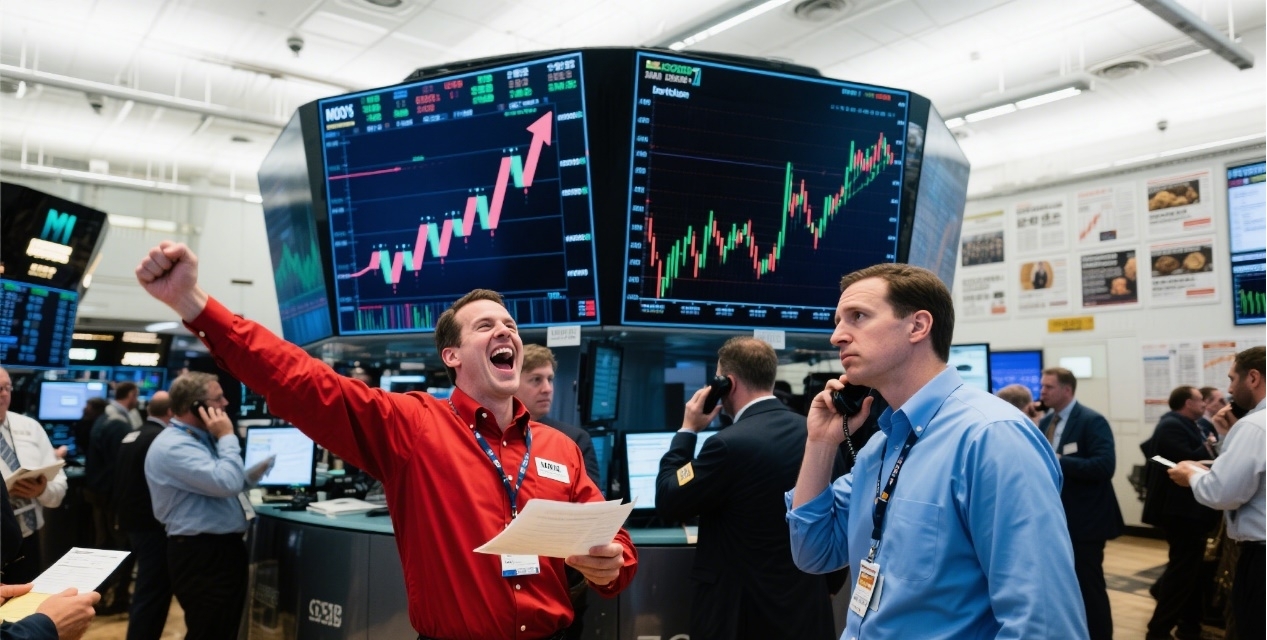
Recently, the global market has shown significant differentiation a complex interplay of multiple factors. US stocks surged as trade negotiations between the US and Europe made progress, with tech stocks leading the market gains; meanwhile, international oil and prices fluctuated due to geopolitical and supply and demand expectations, while European and Asian stock markets exhibited mixed performance due to economic data and policy expectations.
Driven by the signal of easing US-EU trade tensions, the three major US stock indices soared. The Dow Jones Industrial Average gained more than 700 points, rising 1.3%; the NASDAQ Composite Index increased by 2.35%, and the S&P 500 Index rose by 2.00%, marking largest single-day gain in more than two weeks. This rebound mainly stems from US President Trump's announcement to postpone the 50% tariff on the EU until July9th, which has intensified market expectations for a relief in trade tensions.
Tech stocks have become the core driving force of this round of growth. Nvidia, with a65.9% increase in expected revenue and plans to launch low-cost AI chips, saw its stock price rise by more than 3%; despite a 49% yearon-year decline in Tesla's European sales, the stock still rose by 5% after Musk announced his return to a high-intensity work routine; tech giants such as's parent company Alphabet and AMD also exhibited strong performance. In addition, cryptocurrency concept stock Canaan Technology rose by 15% on expectations of Bitcoin-related businesses. Chinese concept stocks, however, showed differentiation, with Pinduoduo plummeting 18% due to its first-quarter revenue missing expectations, while Xiaomi Group, a 47.4% year-on-year increase in first-quarter revenue, setting a new historical high, rose 4% at the start of trading before ret.
International oil prices fell under the dual pressure of supply surplus concerns and geopolitical easing. The WTI crude oil futures price fell 1%, reported at $6.04 per barrel; the Brent crude oil futures price fell 0.9%, reported at $62.85 per barrel. Market expectations for OPEC decide on increasing production at this week's meeting have intensified, coupled with progress in US-Iran talks, investors are concerned about the risk of oversupply. In, US core capital goods orders in April recorded the largest 10-month decline, further exacerbating market concerns about the demand side.
Gold prices fell for the second consecutive day as risk sentiment improved. The spot gold price fell 1.6%, reported at $3303.93 per ounce; the COMEX gold futures price 1.9%, reported at $3300.40 per ounce. Analysts pointed out that the rebound in the US dollar index, the general decline in bond yields, and the cooling of market expectations for the Federal Reserve's rate cut all contributed to suppressing gold's safe-haven demand
European stock markets posted strong gains on the back of trade de-escalation and supportive economic data. Germany's DAX index hit new all-time high, rising more than 1%; France's CAC 40 and the UK's FTSE 100 also edged higher. expectations for a Eurozone economic recovery, coupled with European Central Bank board member Holtzmann's suggestion to delay rate cuts until September, further boosted risk appetite.
Asian, however, showed mixed performance. Japan's stock market came under pressure due to a weakening yen and bond market volatility, with the Nikkei 225 index slightly; South Korea's KOSPI index fell due to tech stocks dragging it down; and India's market rose on the back of foreign inflows and improving consumer data China's A-share market, which is in a phase of consolidation and repair, closed at 3,340.69 points on the Shanghai Composite Index with the GEM index needing to stabilize above 1,980 points for further rebound. Policy tailwinds are positive for tech growth and consumer sectors, but with a wait-and-see sentiment among investors, the lack of liquidity still restricts the rebound space.
Looking ahead, global markets still face multiple uncertainties. The policy path of the Reserve, geopolitical conflicts, global trade frictions, and OPEC production decisions will be key factors affecting market trends. Analysts warn that despite the improvement in market sentiment US equity valuations are high, corporate earnings growth is slowing, and inflationary pressures could still trigger volatility. Investors need to closely monitor the US May non-farm payrolls, the Federal Reserve's June monetary policy meeting, and OPEC production decisions to adjust their asset allocation strategies.

Below is the English translation of the text, with precise handling of political terms, consistent sentence structures, and preservation of the original’s analytical tone and logical flow:
Below is the English translation of the text, with precise …
On December 15 local time, Trump took the British Broadcast…
In recent years, the application of artificial intelligence…
According to Yahoo US media reports, the recent remarks of …
After 11 years of waiting in the deep sea, we finally have …
On December 17, 2025, the newly renovated American "Preside…